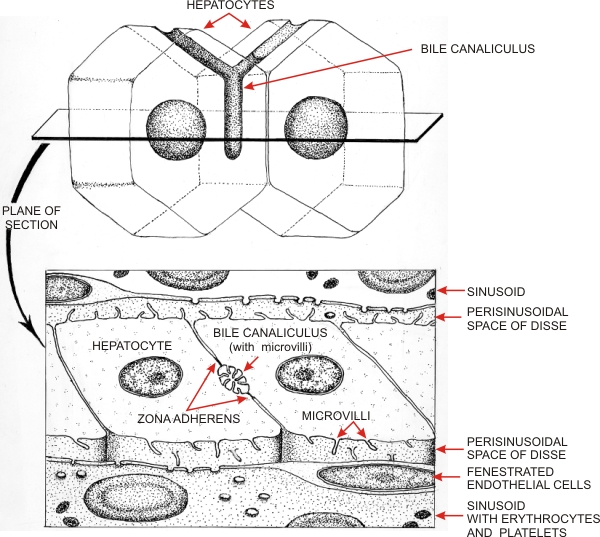|
Diagrams illustrating the localization and structure of a bile canaliculus at the interface of two hepatocytes. The bottom drawing represents the bile canaliculus as seen with the electron microscope.
The bile canaliculus forms hemicylindrical grooves facing adjacent hepatocytes. It is delimited by zona or zonula adherens which tightly bind the cytoplasmic membranes of facing hepatocytes. The lumen of the canaliculus shows numerous microvilli.
Facing the blood sinusoids, lined with fenestrated endothelial cells, the cytoplasmic membrane of the hepatocytes shows short microvilli which occupy the narrow perisinusoidal space of Disse (see Figure 12.84.
|
